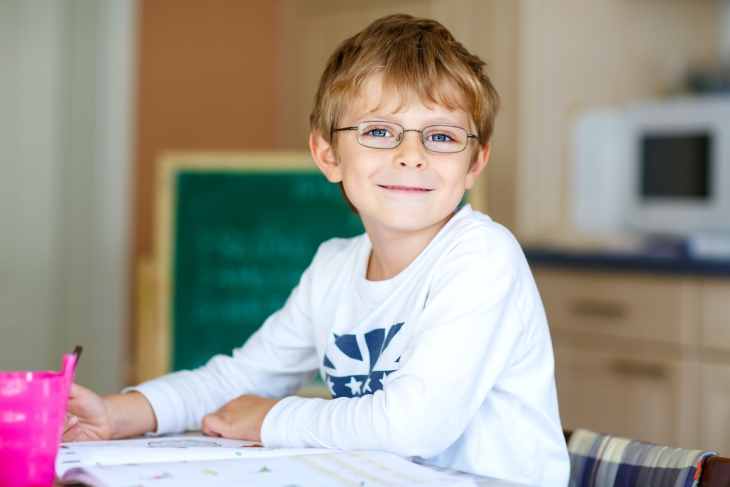COVID-19 has delivered countless challenges for essential workers, from nurses and doctors risking their lives due to shortages of PPE to grocery clerks maintaining calm amid hordes of panicked shoppers.
For educators, running a newly virtual classroom when students and staff are experiencing unspeakable loss and illness among their family and loved ones is impossibly difficult. It is particularly challenging to meet the needs of students with disabilities, given the absence of familiar routine. Yet in these challenging times, it’s critical that we pay heightened attention to serving the most vulnerable among us.
As founding members of the Educating All Learners Alliance, we have seen firsthand how schools across the country are identifying (and inventing) practical ways to educate students with disabilities and ensure that their civil rights are upheld. This alliance of national organizations has joined together to spotlight the ingenuity of educators and curate tools, case studies, and best practices for serving students with disabilities online.
Here are some of the stories that have inspired us.
At Paramount Schools of Excellence in Indianapolis, teachers immediately reached out to each student’s family to understand if they had tech resources and if an adult was available to help the students learn during the day. Educators used this information to tailor their plans to meet individual needs. CEO Tommy Riddick said the school is planning for the long term. “We are acting as if this isn’t going to go away, so we keep our head in the game to make sure we are setting up for long-term success,” he said.
Every day, Paramount’s special education team checks in with each student with disabilities to ensure they have the tools and support they need and that their student plan is fulfilled. Since parents are also taking a more active role in their children’s education, the school is working to provide specific support to them.
Kingsman Academy Public Charter School in Washington, D.C., is in touch with all families and students every day. The school, which serves students at high risk of dropping out, plays a broad role in not only educating students but also supporting their families’ basic needs. As the financial impacts of the pandemic have grown, the school has begun providing food, technological resources, and other essentials to families—even making personal deliveries via Uber. “When you think of Maslow and basic needs, the internet isn’t on there,” said Executive Director Shannon Hodge. “But in this day and age, it actually is. While resources exist out there, we didn’t want our families to have to jump through hoops.”
Within days of the lockdown, the school bought Chromebooks and wireless hotspot devices and prepared backpacks of supplies to ensure every student could access the learning environment. Thanks to this investment of time and funding, Kingsman teachers have been able to achieve quality communications that they initially feared would be lost when the school closed its doors.
Teachers know school closures are particularly hard on students’ social-emotional learning—and that they must work with parents to provide additional support. At Crestwood Elementary in downtown Las Vegas, Juliana Urtubey co-teaches an inclusive class that includes instruction on mindfulness and how to cultivate a growth mindset. In the past, the school taught those skills through a series of lessons at the start of the year, as well as via ongoing one-on-one coaching to help students process emotions. Students were encouraged to visit a designated “calming corner” to use techniques like deep breathing and recharging.
Under COVID-19, these skills are more relevant than ever, so Urtubey brought these lessons back to the center, reserving twenty minutes each day for breathing exercises, reteaching lessons, group discussions, and individual journaling. “Growth mindset supports students to be mindful of how they are feeling and how others may be feeling,” Urtubey explained. “This is critical in building global responsibility. I want to build a bridge for this by discussing small ways we can all lend a hand during this crisis.”
Service providers have also pivoted quickly to continue their students’ education in a virtual environment. In Massachusetts, speech-language pathology master’s student Nicole Amato and professor Alyssa Boucher shared how they transitioned a one-on-one lesson for a kindergartener with autism and language challenges to a Zoom setting. Using online tools and digital imagery instead of the props she used in the clinic, Amato found that the new teletherapy plan supported her student’s progress almost as well as the lessons she provided in the clinic.
All teachers and parents can heed the advice of those who work with diverse learners. Megan Gross, a long-time special education teacher and inclusion specialist at Del Norte High School in San Diego who works with EALA partner Teacher2Teacher, reminds us that we are all “getting inundated with information right now” and that it’s important to streamline information and let families know what to expect. Kristin Wright, the Director of the Special Education Division at the California Department of Education, reminds us, “during closure, teachers are balancing new challenges and are looking for vetted, practical solutions that make a difference for their students.”
It’s too soon to make proclamations of success, but it’s clear that educators and practitioners are identifying creative ways to keep students with disabilities engaged and learning. There’s nothing easy about a pandemic, but we cannot use this crisis as an excuse to abandon our most complex learners. The effects of COVID-19 are unlikely to end anytime soon, and these creative solutions to distance education for complex learners prove there is no need to ration lifeboats. Educators and parents—alongside efforts list EALA---can rise to this challenge and continue to educate all learners.


